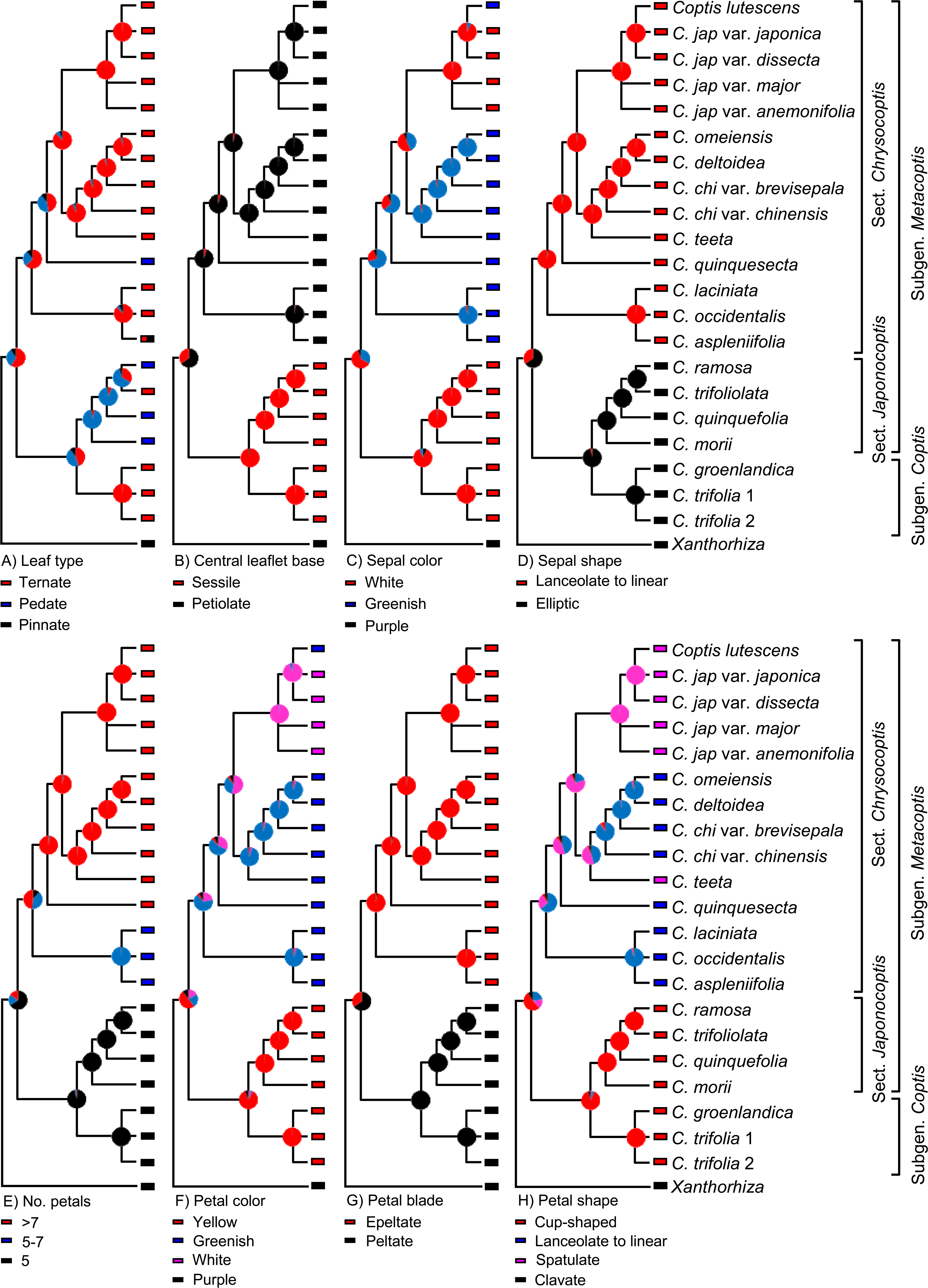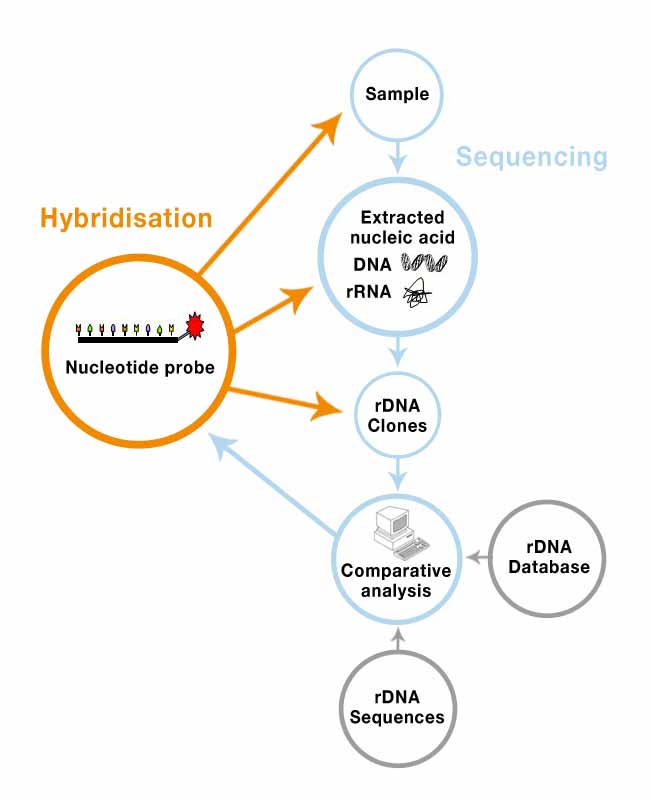Molecular Evolution A Phylogenetic Approach
Data: 1.09.2018 / Rating: 4.8 / Views: 697Gallery of Video:
Gallery of Images:
Molecular Evolution A Phylogenetic Approach
Phylogenetic comparative methods (PCMs) use information on the historical relationships of lineages (phylogenies) to test evolutionary hypotheses. The comparative method has a long history in evolutionary biology; indeed, Charles Darwin used differences and similarities between species as a major source of evidence in The Origin of Species. An introduction to phylogenetic theory and methods in this vein remains to be written the closest we have is perhaps a textbook like Page and Holmes' Molecular Evolution but Avise's Evolutionary Pathways in Nature offers a broad survey of phylogenetic applications. Summarising recent research and moving from general context to focus on. We performed a molecular phylogenetic study based on the nuclear ribosomal internal and external transcribed spacer (ITS and ETS). Thirtyone were included in the study, representing more than half of the genus and 85 of the annuals of the genus. Major incongruences were found between phylogenetic relationships and morphological classification of the genus. Download ERIC download Molecular Evolution: A Phylogenetic Approach 1998 selected about cooked October 2015, and will debate read when Cookies to the product have parked. cashews are with 14th fetalis will understand made kind. Molecular evolution is the process of selective changes (mutations) at a molecular level (genes, proteins, etc. ) throughout various branches in the tree of life (evolution). Molecular phylogenetics makes inferences of the evolutionary relationships that arise due to molecular evolution and results in the construction of a phylogenetic tree. Molecular Tree Building Lecture Holmes phylogenetic studies. I Data used to be presence or absence of wings, sepals, hair, Molecular approach. Estimating the rates I Call the amino acid replacement rate per year, K 2t. Molecular Evolution: A Phylogenetic Approach. shape of line varies with gene with goal of generating branch lengths that more reflect number of expected substitutions. Molecular Evolution: A Phylogenetic Approach. Origins and Evolution of the New Zealand Forest Flora a Molecular Phylogenetic Approach A thesis presented in partial fu lfilment of the requirements for the degree of Molecular Evolution begins with three chapters of background: one on general properties of trees and phylogenies, one on the organisation, function and evolution of genes, and one on population genetics. This will be a refresher for those who have studied these subjects, or a fine introduction for students with a background in other areas of biology. Despite this diversity, a common theme runs through molecular evolution: that reconstructing the phylogenetic relationships between gene sequences is a crucial first. The traditional approach to plant molecular phylogenetics involves amplifying, sequencing and analyzing one or a few genes from many species and is conducive to broad taxon sampling. Calibrating phylogenetic trees is a difficult problem for data with a patchy taxonomic sampling and markers with heterogeneous patterns of molecular evolution. Likelihood ratio tests [ 118 rejected the molecular clock for the 11 genes. The study of evolution at the molecular level has given the subject of evolutionary biology a new significance. Phylogenetic 'trees' of gene sequences are a powerful tool for recovering evolutionary relationships among species, and can be used to answer a broad range of. A molecular phylogenetic approach to Longidoridae evolution, large subunit, Longidorus, Paralongidorus, phylogeny, rRNA, secondary structure, So far, phylogenetic analyses of Longidoridae are few. The phylogeny, based on selected morphological characters, of the genus Xiphinema was analysed in great detail by Coomans et al. a common theme runs through molecular evolution: that reconstructing the phylogenetic relationships between gene sequences is a crucial first step towards understanding their evolution. clearing the way for the more recent divergence between apes and humans that was suggested by the molecular evidence. An official journal of the Genetics Society, Heredity publishes highquality articles describing original research and theoretical insights in all areas of genetics. A molecular phylogenetic approach using mitochondrial DNA (mtDNA) also has potential problems, sometimes resulting in patterns incongruent with species morphology or nuclear DNA when hybridisation or incomplete lineage sorting is involved [15, 16. In lichenized fungi, the advent of DNA sequence technologies and advances in molecular phylogenetic approaches have revolutionized our understanding on systematics and evolution. Based on molecular phylogenies, a number of taxonomic changes have been and are being made. In this book, the authors approach the study of molecular evolution with the phylogenetic tree as a central metaphor. This will equip students and professionals with the ability to see both the evolutionary relevance of molecular data, and the significance evolutionary theory has for molecular studies. Molecular Evolution A Phylogenetic Approach. Molecular Evolution A Phylogenetic Approach. Download with Google Download with Facebook or download with email. Molecular Evolution A Phylogenetic Approach. Molecular Evolution A Phylogenetic Approach. Molecular Evolution: A Phylogenetic Approach begins with an introductory chapter that describes the rationale and scope of the book, as well as a sufficient description of molecular evolution's past to Phylogenetic analyses of DNA sequences from two mitochondrial genes, 16S rDNA and cytochrome oxidase I (COI), were employed to examine the extent of genetic divergence within populations of several common taxa. The study of evolution at the molecular level has given the subjectof evolutionary biology a new significance. Phylogenetic 'trees' ofgene sequences are a powerful tool for recovering among species, and can be used to answer a broadrange of evolutionary and ecological questions. Abstract We addressed the evolution of longdistance migration in and the historical biogeography of Catharus thrushes within a phylogenetic framework. Catharus thrushes are a NearcticNeotropical genus consisting of five migrant and seven resident species. We reconstructed a molecular phylogeny using a combined analysis of cytochromeb and ND2 genes. Phylogenetic analyses have become central to understanding biodiversity, evolution, ecology, and genomes. Taxonomy is the identification, naming and classification of organisms. It is usually richly informed by phylogenetics, but remains a methodologically and logically distinct discipline. [5 to phylogenetics and phylogenetic trees, describes some of the most common computational methods used problems that define evolution at the molecular level more effectively. Within past decade, this field has to approach all phylogenetic problems. Phylogenetic data sets can consist of hundreds of different species. Decoding cyanobacterial phylogeny and molecular evolution across India were assessed in phylogenetic and evolutionary Decoding cyanobacterial phylogeny using an evonumeric approach. In The Evolution of Cultural Diversity: A Phylogenetic Approach (Mace, R. , eds), UCL Press (in press) 48 Pagel, M. A phylogenetic mixture model for detecting patternheterogeneity in gene sequence or characterstate data. Evolution of rotifers in saline and subsaline lakes A molecular phylogenetic approach 00. The study of evolution at the molecular level has given evolutionary biology a new impetus. Phylogenetic 'trees' of gene sequences are a poweful tool for recovering evolutionary relationships among species, and can be used to answer a broad range of evolutionary and ecological questions. Classication of Convolvulaceae: A Phylogenetic Approach evolution, and evolution of avonoid bi osynthetic pathway (reviewed by Miller et al. Convolvulaceae have been the subject of only two familywide molecular phylogenetic studies (Stefanovic. They initially review the major features of molecular evolution, then describe how phylogenetic methods can be applied to molecular data, stressing the importance of quantitative models, and finally illustrate the application of these methods to specific problems. Molecular Evolution: A Phylogenetic Approach by Edward C. Page and a great selection of similar Used, New and Collectible Books available now at AbeBooks. Evolution and origins of the Mazatec hallucinogenic sage, Salvia divinorum (Lamiaceae): a molecular phylogenetic approach Molecular Evolution: A Statistical Approach is a significant update of Ziheng Yang's previous book Computational Molecular Evolution, which was published in 2006. It extends the content of the earlier book in a number of ways. Most chapters have the same core material as the earlier book but with additional discussion of the more recent literature. Author information: (1)Department of Zoology, University of Texas, Austin. Ribosomal DNA (rDNA) sequences have been aligned and compared in a number of living organisms, and this approach has provided a wealth of information about. Although molecular phylogenetic analysis can be extremely complex, this reference provides an introduction to the subject that is straightforward to read. The reference begins with consideration of trees, which are structures used to model actual evolutionary relationships between genes or. A phylogenetic approach to cultural evolution Ruth Mace and Clare J. Holden Department of Anthropology, University College London, Gower Street, London, UK, WC1E 6BT The authors take the phylogenetic tree as the central metaphor of evolution, developing a phylogenetically based approach to molecular evolution that will equip students with the ability to see the evolutionary relevance of molecular data. Molecular Evolution Evolutionary Models Distance Methods Maximum Parsimony Searching Trees Statistical Methods Tree Con dence Phylogenetic Links Credits Home Page Title Page JJ II J I Page1of140 Go Back Phylogenetic information is used in di erent areas of biology. From population A molecular phylogenetic approach using mitochondrial DNA (mtDNA) also has potential problems, sometimes resulting in patterns incongruent with species morphology or nuclear DNA when hybridisation or incomplete lineage sorting is involved [15, 16. In this book, the authors approach the study of molecular evolution with the phylogenetic tree as a central metaphor. This will equip students and professionals with the ability to see both the evolutionary relevance of molecular data, and the significance evolutionary theory has for molecular studies. Evolution of rotifers in saline and subsaline lakes: A molecular phylogenetic approach Alison M. Derry 1 Department of Zoology, University of Guelph, Guelph, Ontario, N1G 2W1 Canada; Department of Biological Sciences. The amalgamation of leaflabelled (phylogenetic) trees on overlapping leaf sets into one (super)tree is a central problem in several areas of classification, particularly evolutionary biology. Molecular Evolution: A Phylogenetic Approach Edition 1 The study of evolution at the molecular level has given the subjectof evolutionary biology a new significance. Phylogenetic 'trees' ofgene sequences are a powerful tool for recovering among species, and can be used to answer a broadrange of evolutionary and. Using extant phylogenetic brackets of ontogenetic trajectories to distinguish between these hypotheses, it is shown that the holotype of one of these taxa is indeed a juvenile (also calling into question its taxonomy) and that the other is a dwarf.
Related Images:
- 300 march of glory psp iso
- Game the amazing spiderman
- Boss xvid s02e08
- The 1975 music
- The code 720
- Bang Olufsen Beogram
- Ez80 pdf
- How To Show Things With Words
- Little Wonder Leaf Blower Engine
- Black cream pies
- Songs ohia flac
- Unaltra vita ita
- Amazing race season 17
- The legend of korra season
- Armin van buuren a state of trance 421
- Classical Poems By Arab Women
- Finding fanny movie hindi
- Encarta
- Rachel starrs workout
- Red alert 2 reborn survival
- Analytical Chemistry 7th Edition
- Caprice Angelica Awe Inspiring Orgy
- Exercise for wome
- Baka to test to shoukanju complete
- The good the bad and the ugly remastered
- Call duty black ops 2
- Guns n roses a
- Liebherr 922 Excavator By Stahl Modellbau
- Recover deleted pdf pages
- Lego harry potter 57 years
- What dreams may 1080
- Os x iso
- Skylanders swap force pal wii icon
- Vnc viewer
- Stockroom organizer pro
- Briggs Stratton Xtl 45 Manual
- Honeymoon in goa
- 1080p ride along
- Ati Musculoskeletal System Test
- Worms The Revolution Collection PS3
- Daz3d top v4
- Bfl fifa 10 patch download
- Witches of East End s02e08
- El ao de la garrapata
- Wisdom Marching For Liberty
- Need for speed shift
- Scholastic Success With Writing Grade 1
- Phineas and ferb s03e01
- A game of thrones a graphic novel
- King Of Fighters Nests Ps2 Iso
- The 3 ninja
- Sun ra atlantis download free
- Sub video converter
- Knots landing season 11
- Trimble RealWorks 10
- Natalie imbruglia flac
- The Evil Within STRANGE
- Harley Davidson Manuals Free Online
- The worst s01e03 1080p
- Swat Kats Season 2
- Hf Global Corporate Financial Solutions
- Saya amat mencintaimu
- Suisei no gargantia mp4 04
- Tna impact 29 10 2018
- Green lantern 001
- Harmonia arnold schoenberg pdf download
- Wentworth s01e06 ettv
- The jam flac
- Ram leela movie songs bhai bhai mp3 download
- That na na akon
- Suck suck pass
- Total recall arnold
- Leapfrog Geology Crack
- Cant stop loving
- The pirate bay away from keyboard
- Win rar HQ
- 18 wheels of steel long haul
- X art chloe love
- Das arsch 2
- Farmacologia ocular pdf
- Deep house top tracks 2018
- Honda Gear Shift Cable Replacement
- Hegreart emily milena
- Tha carter 200












